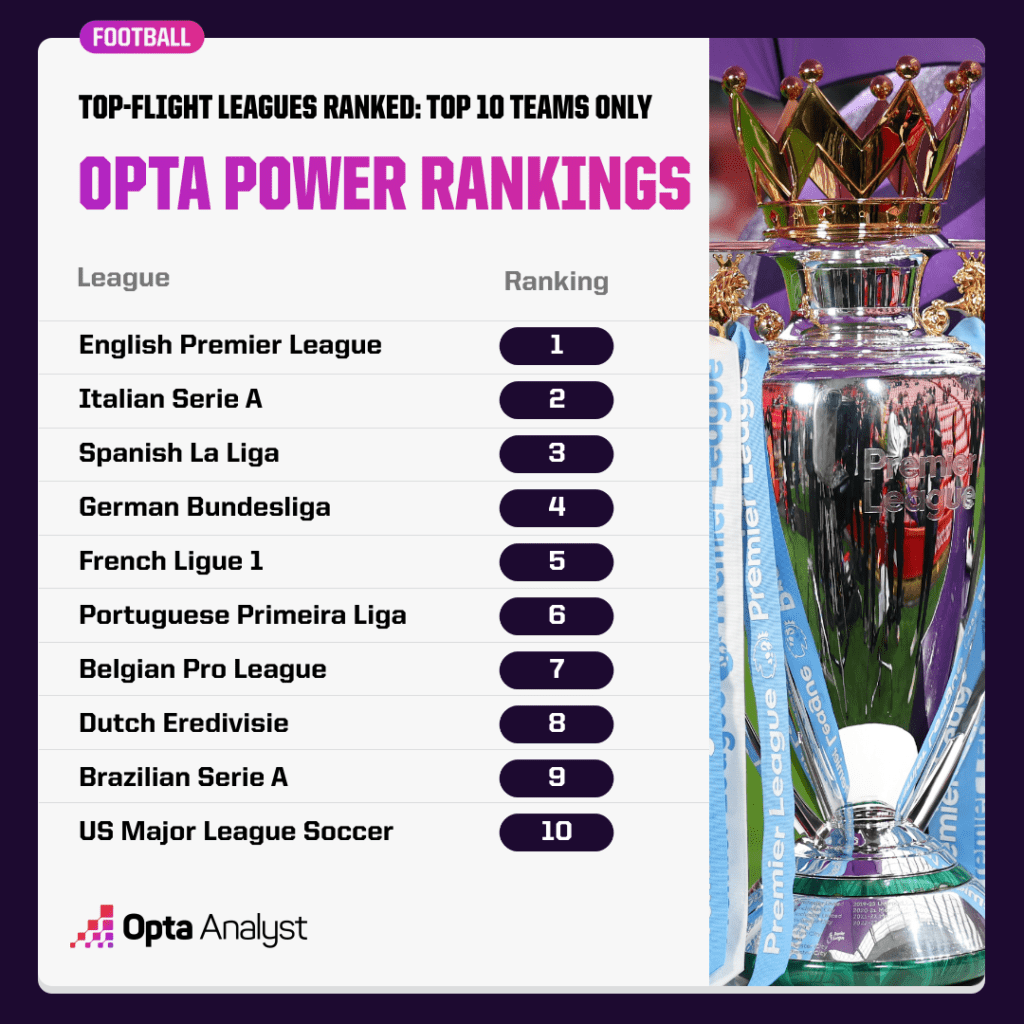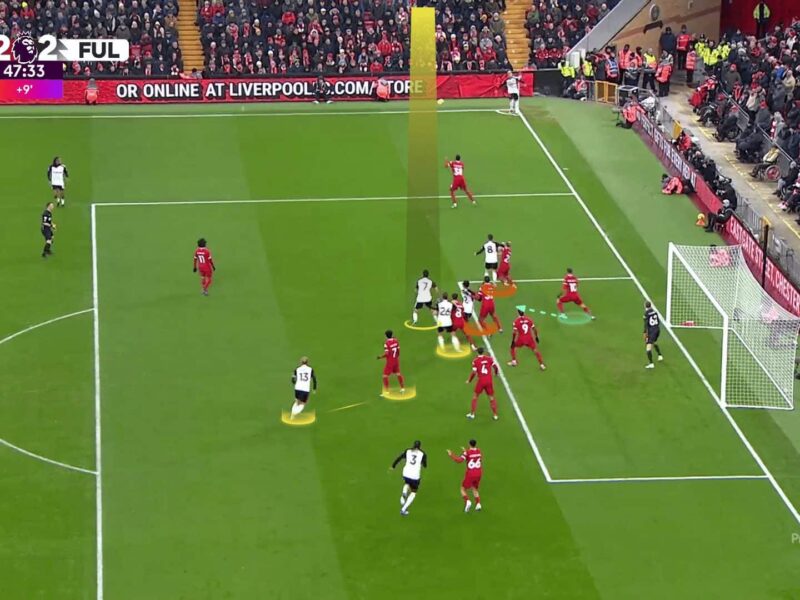From blistering pace to tactical masterclasses, domestic football leagues across the globe offer unique brands of the beautiful game. But which league truly stands at the pinnacle? Ranking them involves weighing various factors: the quality of the teams throughout the league, the concentration of star players, success in continental competitions (like the Champions League and Europa League), financial strength, global appeal, and overall competitiveness.

Based on these factors, here’s our ranking of the world’s top football leagues right now:
1. Premier League (England)
- Why it’s #1: The Premier League currently boasts an unparalleled combination of factors.
- Competitiveness & Depth: While Manchester City has dominated the title race recently, the quality runs deep. Numerous teams (Arsenal, Liverpool, Man Utd, Chelsea, Newcastle, Tottenham, Aston Villa) possess significant resources and can challenge for European spots or even the title in any given year. The relegation battle is often fierce, and “anyone can beat anyone” feels truer here than elsewhere.
- Financial Power: It’s the wealthiest league by a significant margin, attracting top players and managers from around the globe. This allows even mid-table teams to sign international stars.
- Star Power & Global Appeal: Home to many of the world’s most recognizable players and biggest clubs, driving massive global viewership and commercial success.
- Pace & Intensity: Known for its high tempo, physical style of play, making it incredibly entertaining to watch.
- Recent European Success: English teams consistently perform well in the Champions League and Europa League, often featuring multiple teams in the latter stages.
- Verdict: The best combination of depth, quality, intensity, financial muscle, and global reach puts the Premier League comfortably at the top for now.
2. La Liga (Spain)
- Why it’s #2: La Liga remains a powerhouse, defined by technical quality and tactical sophistication.
- Elite Top Tier: Real Madrid and Barcelona remain two of the world’s biggest and most successful clubs, attracting global superstars and consistently competing for the Champions League. Atletico Madrid provides a formidable third force.
- Technical Proficiency: Traditionally emphasizes skill, possession-based football, and tactical intelligence over pure physicality.
- Historical European Dominance: Spanish clubs, particularly Real Madrid, boast an unmatched record in European competitions historically. Even Sevilla’s Europa League dominance highlights the league’s strength.
- Developing Talent: Excellent at nurturing technical players through club academies (like Barcelona’s La Masia).
- Weakness Compared to PL: Financial disparity between the top clubs and the rest is significant, leading to less competitive balance throughout the league compared to England. Global marketing perhaps lags slightly behind the Premier League juggernaut.
- Verdict: Still elite, especially at the top, with unmatched European pedigree and technical brilliance. Clear #2.
3. Serie A (Italy)
- Why it’s #3: Serie A has enjoyed a significant resurgence, blending its traditional tactical discipline with improved attacking play and competitiveness.
- Tactical Depth: Italian football is renowned for its tactical nuance and defensive organization, producing excellent coaches.
- Increased Competitiveness: The title race has become more open in recent years (Inter, AC Milan, Napoli winning titles), and multiple teams are challenging for European spots. Teams like Atalanta play exciting football.
- Improved European Performance: Italian clubs have performed strongly in Europe recently, with teams reaching the finals of the Champions League, Europa League, and Conference League last season. Inter Milan looks like a genuine European contender.
- Passionate Fanbases: Boasts historic clubs with incredibly passionate supporters.
- Weakness Compared to PL/La Liga: Overall financial power and ability to attract the absolute highest tier of global superstars still lags behind the top two. Stadium infrastructure is often older.
- Verdict: A league firmly on the rise, offering tactical intrigue and increased competitiveness. Comfortably sits at #3.
4. Bundesliga (Germany)
- Why it’s #4: Known for its exciting attacking football, fantastic stadium atmospheres, and focus on developing young talent.
- Attacking Football & Goals: Games are often high-scoring and entertaining.
- Fan Culture: Famous for large, passionate crowds, affordable tickets, and vibrant stadium experiences (e.g., Dortmund’s “Yellow Wall”).
- Talent Development: Excellent track record of developing young players who often move on to bigger leagues.
- Bayern Munich Dominance (A Pro & Con): Bayern’s decade-long dominance guarantees consistent quality at the very top and ensures a perennial Champions League contender. However, it has historically reduced the competitiveness of the title race (though Bayer Leverkusen spectacularly broke that streak).
- Weakness: The gap between Bayern (and perhaps now Leverkusen/Dortmund/Leipzig) and the rest of the league in terms of resources and consistent quality is significant. Less depth than the top three.
- Verdict: Highly entertaining and boasts one true global superpower, but lacks the overall depth and competitiveness of the leagues above it. Strong #4.
5. Ligue 1 (France)
- Why it’s #5: A league often dominated by one super-club but serves as a crucial incubator for world-class talent.
- PSG Dominance: Paris Saint-Germain’s financial might attracts global superstars (like Kylian Mbappé) and makes them perennial title winners and Champions League participants.
- Excellent Talent Production: Ligue 1 is arguably the world’s best league for developing young talent, particularly athletic and skillful attackers, who are then often sold to bigger leagues. Think of the pipeline of French stars globally.
- Physicality & Athleticism: Known for producing physically gifted players.
- Weakness: Heavily reliant on PSG for global recognition and European success. Significant quality gap between PSG and most other clubs. Less competitive balance than the other top leagues.
- Verdict: Holds the fifth spot primarily due to PSG’s star power and its incredible track record as a talent factory, but lags significantly behind the top four in overall quality and competitiveness.
Conclusion:
While fans will always debate the specifics, the current hierarchy places the Premier League at the summit due to its unparalleled blend of quality, depth, and financial power. La Liga follows with its technical brilliance and elite clubs, while Serie A’s resurgence makes it a strong third. The Bundesliga offers entertainment and a unique fan culture, and Ligue 1 remains vital for its talent development, led by the star power of PSG. Each league offers something unique, contributing to the rich tapestry of global football.
How would YOU rank the world’s top football leagues? What factors do you prioritize? Share your rankings in the comments!

